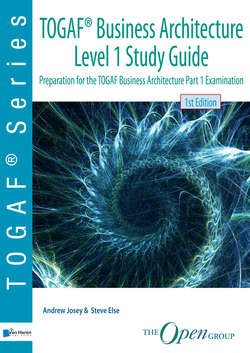Читать книгу TOGAF® Business Architecture Level 1 Study Guide - Andrew Josey - Страница 20
На сайте Литреса книга снята с продажи.
2.6 Using the TOGAF Framework with Other Frameworks
ОглавлениеTwo of the key elements of any Enterprise Architecture framework are a definition of the deliverables that the architecting activity should produce, together with a description of the method for production.
Many Enterprise Architecture frameworks focus on the first of these – the specific set of deliverables – and are relatively silent about the methods to be used to generate them.
Because the TOGAF standard is a generic framework and intended to be used in a wide variety of environments, it provides a flexible and extensible content framework that underpins a set of generic architecture deliverables. As a result, the TOGAF framework may be used either in its own right, with the generic deliverables that it describes; or these deliverables may be replaced or extended by a more specific set, defined in any other framework that the architect considers relevant.
In all cases, it is expected that the architect will adapt and build on the TOGAF framework in order to define a tailored method that is integrated into the processes and organization structures of the enterprise. This architecture tailoring may include adopting elements from other architecture frameworks, or integrating TOGAF methods with other standard frameworks, such as ITIL®, CMMI®, COBIT®, PRINCE2®, PMBOK®, and MSP®. It may also include adopting elements from reference materials in the TOGAF Library, such as the IT4IT™ Reference Architecture.
As a generic framework and method for Enterprise Architecture, the TOGAF standard also complements other frameworks that are aimed at specific vertical business domains, specific horizontal technology areas (such as security or manageability), or specific application areas (such as e-commerce).
